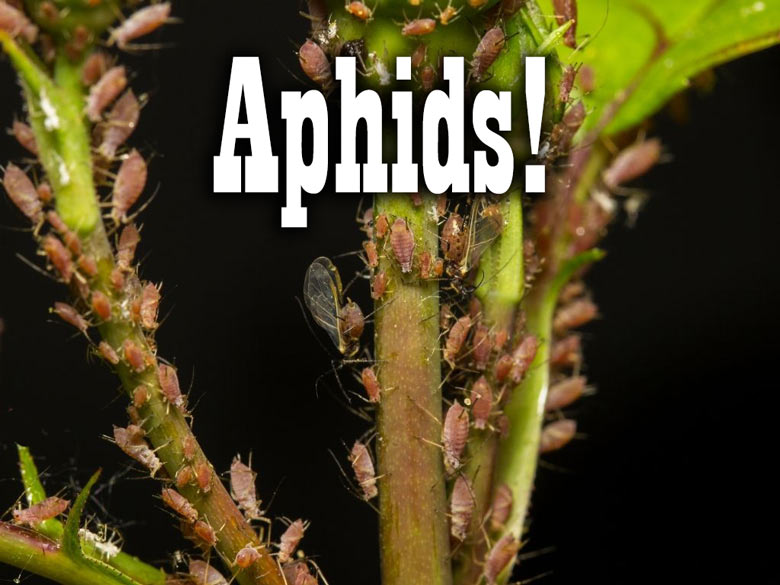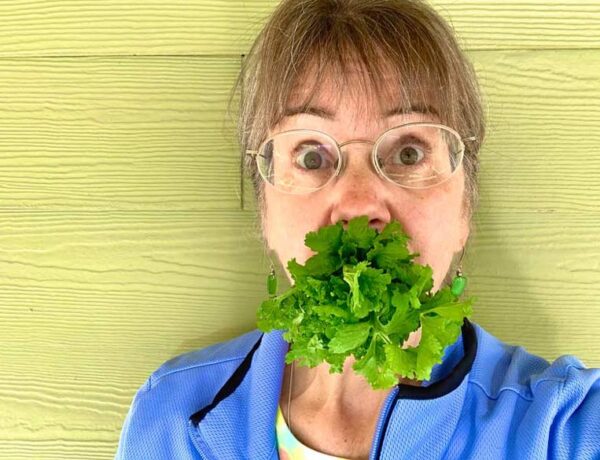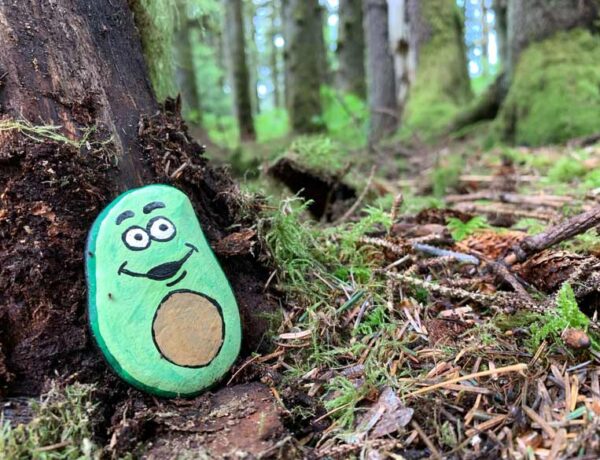Have you ever noticed little ‘specks’ on your indoor plants? I’m talking orchids, spider plants, seedlings, hydroponic plants. Little specks? You know what I mean…
Little dots on the leaves or the stem… Or UNDER the leaves.
Well, if you haven’t really paid much attention to them, next time you have a chance to look at your plants… Lean in close. Take a look and see if they move.
Because if they move?
What that means is, there’s a good chance you’ve got APHIDS. (Well, okay, maybe not YOU, but your beloved plants).
Why am I bringing up the topic of aphids? Aren’t those one of the pests we notice on our lettuce growing outside and, heaven forbid, on ANY plant in our greenhouse or hoophouse!
Oh, I almost forgot: The seedlings we are about to start for spring planting. In other words, grower beware!
Now, as if God has a sense of humor, aphids come in different shapes, sizes, and colors. There are green aphids, black aphids, brown aphids. There are MANY kinds of different colored aphids. And believe it or not, each of them carries a different set of problems.
[perfectpullquote align=”full” bordertop=”false” cite=”” link=”” color=”” class=”” size=””]Remember, life’s troubles aren’t meant to trip us up, but provide an opportunity for growth.[/perfectpullquote]
The question is, are aphids a big deal?
Are they something you need to worry about, or can you just ignore them?
[perfectpullquote align=”full” bordertop=”false” cite=”” link=”” color=”” class=”” size=””]Like any problem in life, if you ignore it, it doesn’t magically go away.[/perfectpullquote]
Well, there’s good news and bad news. The BAD news is if you have aphids on your mature plants or seedlings, this means that sometime soon, you’re going to have to do something to SAVE your plants. Aphids are the bane of gardeners everywhere because they feed on the plant’s sap and literally suck the life out of leaves, stems, buds, flowers, fruit, and yes… roots.
[Hi, Marion Owen here. This article was originally published in the Kodiak Daily Mirror, the hometown newspaper for Kodiak, Alaska. You can access the archive page for my past columns, written each week since 1986. One more thing… if you’re not happy with your composting efforts, then I invite you to discover your #1 composting mistake by taking my 60-second assessment here.].
Needless to say, aphids are voracious eaters. And they reproduce so quickly—we’re talking several generations is a matter of months—that by the time you notice the insects on your plants, you’re likely in the midst of a full-blown invasion.
That’s the bad news.
The GOOD news is this: Aphids are not the end of the world. There ARE things you can do about it.
First, be alert. (As the joke goes, the world needs more lerts).
Here are two primary signs that aphids have discovered your plants:
- Stunted, shriveled, yellowing, or curling at the leaves, despite your best efforts to keep them healthy and alive.
- A sticky, honey-like residue they leave behind after feeding, which is constant, sorry to say. Terrible table manners, wouldn’t you say?
What can you DO about these little plant-eaters?
Fortunately, you have choices. Here’s three for starters. (I’ll address more strategies for outdoor gardening in future columns). And what you decide on depends on whether you’re dealing with aphids inside your house or outside, as you’ll see
You might also enjoy my popular article, My Favorite Natural Solutions for Feeding Plants and Controlling Pests.
1. Hose them down. Obviously, this is NOT a tactic for your living room, but outside, this works. (In my early years of maintaining a greenhouse, I took a hose to my tomato plants. But that’s another story).
If you spot a few aphids on your plants, the minor infestation can usually be banished with a strong stream of water from the hose. Run water all over the plant, from top to bottom, making sure to target the underside of leaves. Lather, rinse, repeat this process every few days until you’ve successfully eliminated all aphids. Note to (your)self: This may take a couple of weeks.
2. Increase air circulation. This goes for greenhouse plants as well as seedlings. Many gardeners overlook the importance of good air circulation, especially when starting seedlings. Good air keeps damping-off disease at bay.
3. Spray leaves with DIY insecticidal soap.
One of the most popular articles on my blog is called “My Favorite Natural Solutions For Feeding Plants And Controlling Pests.” (Go to MarionOwenAlaska.com and type ‘solution’ in the Search Posts box).
Here is the recipe for Aphid Soap Spray, which is ideal for all soft-bodied insects…
Add 1 tablespoon of liquid soap (Dr. Bronner’s), which also works as an emulsifier, to 4 cups of lukewarm water
Fill the sprayer, gently invert a few times (try not to foam it up by shaking) and spray on affected plant leaves and stems, especially UNDER leaves and other hiding places where aphids hang out.
Store spray at room temperature. (The active ingredient in insecticidal soap comes from the fatty acids, so it’s important to use the real thing). As reported in the San Francisco Gate, the granddaughter of the company’s founder, Lisa Bronner suggests adding 1/2 teaspoon of cinnamon or cayenne pepper to your aphid soap spray to deter future infestations.
Late winter garden calendar:
- Clean seed-starting containers, set up lights, inventory seeds, gather up labels (we don’t always remember, right?).
- Keep your stored plants [pelargoniums (windowbox geraniums), begonias. and fuchsia] under lights if possible and water just enough to keep damp.
- Be an early bird and cast your “Potato Vote” at Sutliff’s – They want to know what kind of potatoes to order.
I hope your week goes well. Be safe!

++++++++++++++++++
P.S. Slowly but surely I’m posting over 1,200 of my weekly gardening articles, which you can access here. And be sure to check out my report: “220 Things You Can Compost”. To contact me by email: marion (at) marionowenalaska.com.





No Comments